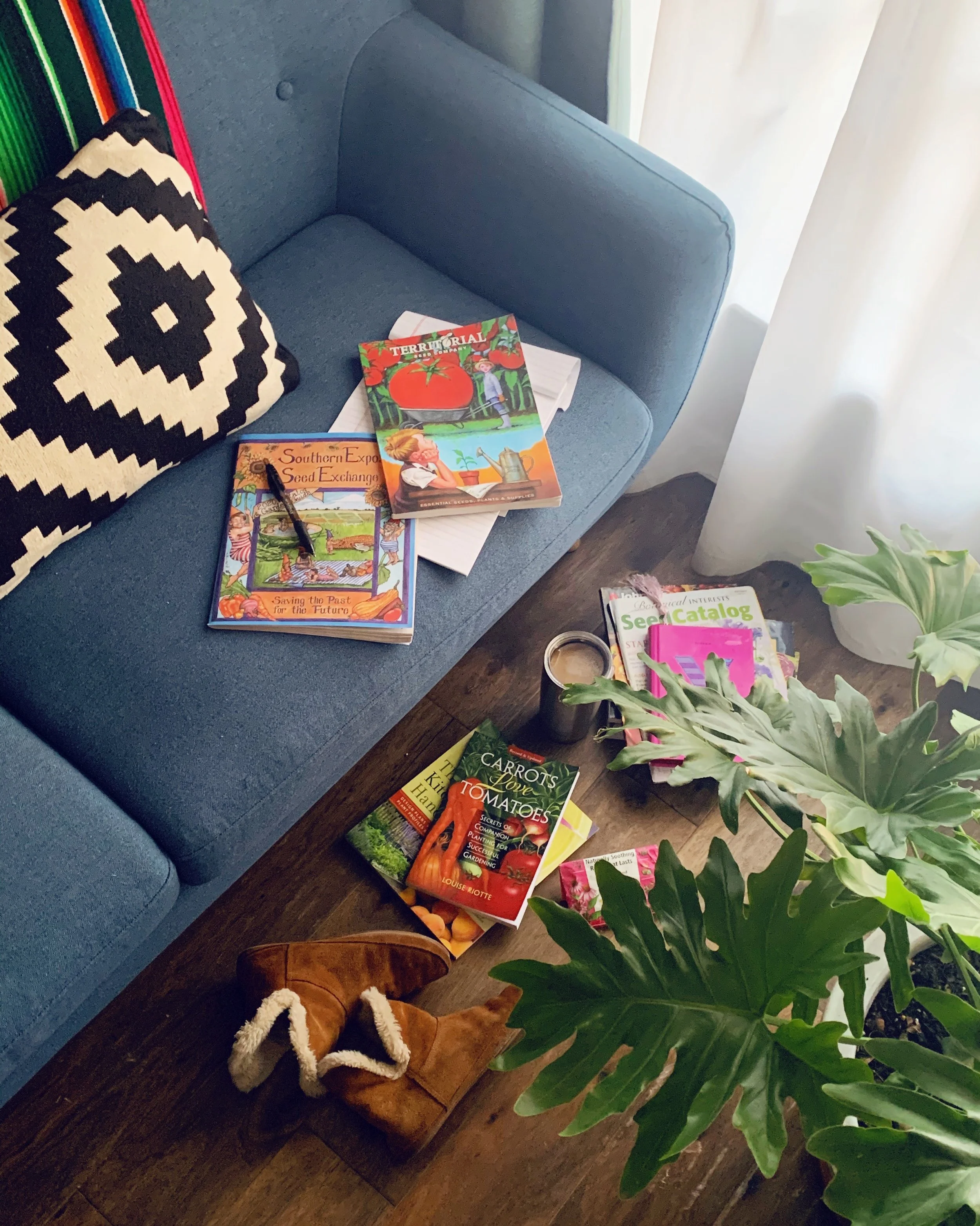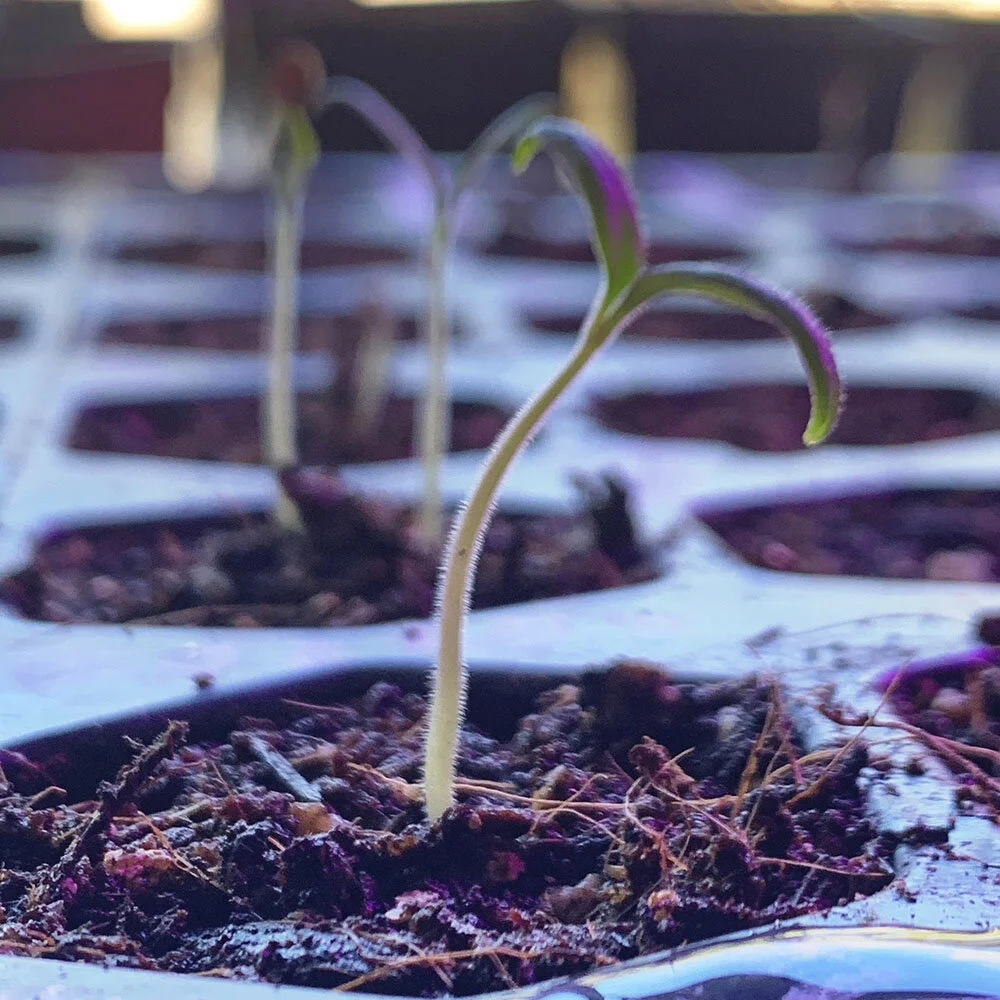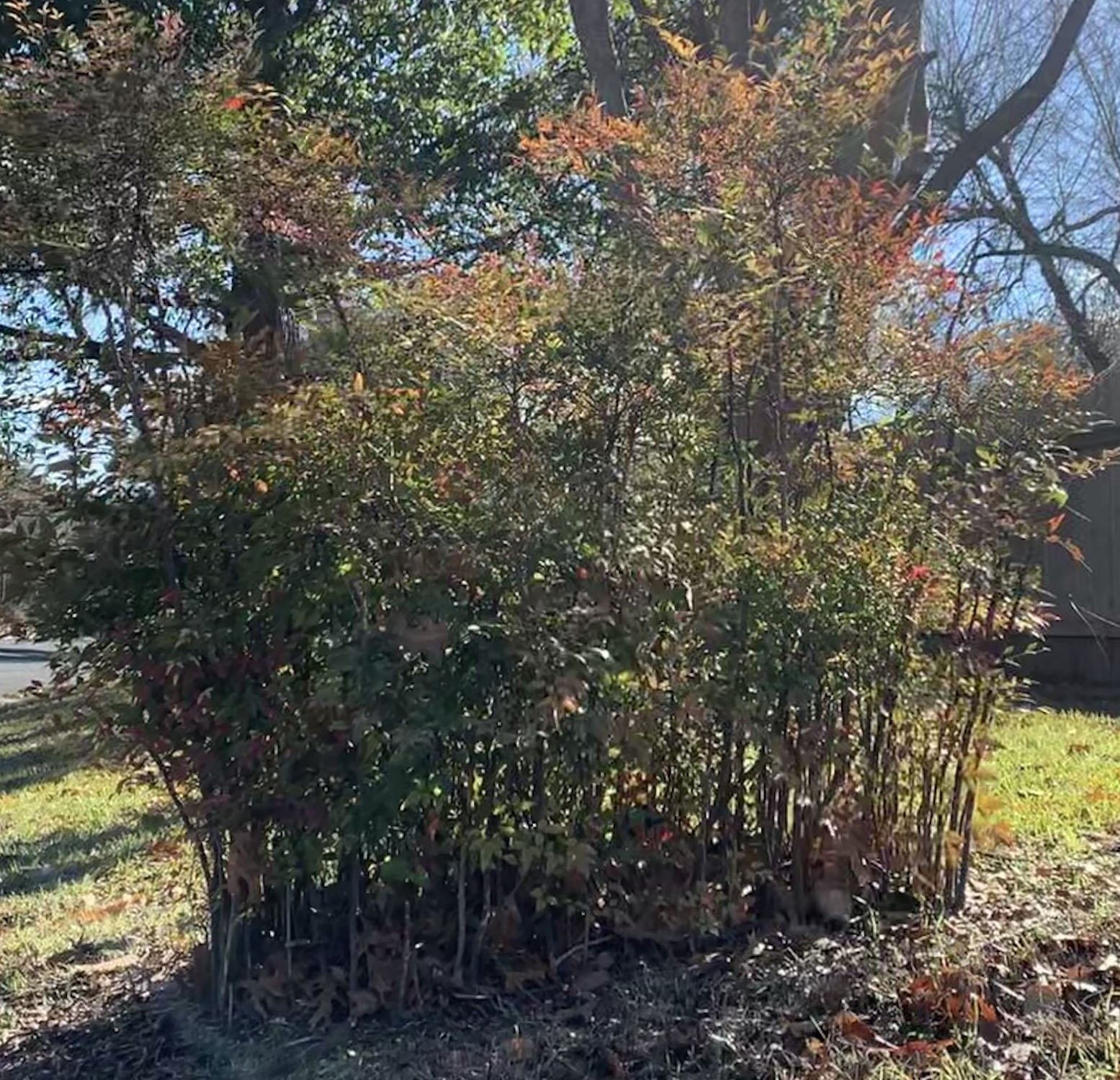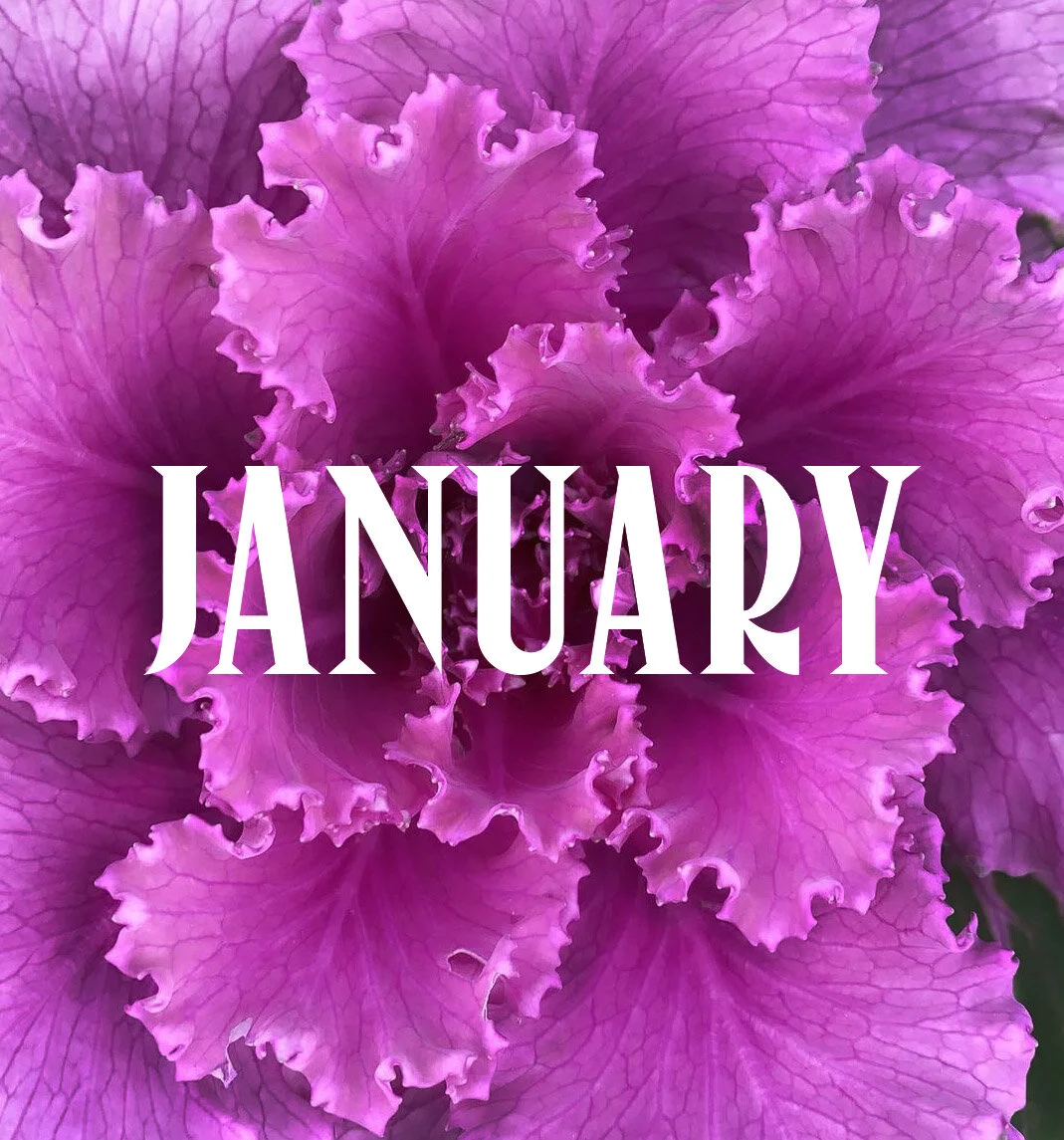What to Do in the Garden in January
Feverfew in my January 2020 garden
Begin again, or for the very first time.
January is the time to surround yourself with seed catalogs and dream of your future garden. What will grow this year that you’ve never grown before? What has become a part of your “Must Grow” list, something you can’t see your garden without? It’s a time of new beginnings in central Texas, not just because of the timing of the calendar. You can start lots of your fall crops over again this month.
If the first freeze of the season did a number on your garden, just begin again! I know you may be a little sad about losing the lush garden that high December temps provided before cruelly taking it away, but seasoned gardeners know that’s just how it goes. You’ll be thankful to not be dealing with an army of grasshoppers come spring. Also, I for one am glad to have at least one month where I’m not being devoured by mosquitoes. We Texas gardeners don’t have that many months where it’s nice to be outside, but January is usually one of them.
(Except for the cedar, but that’s another story.)
January Garden Tasks
A doomed tomato seedling, 2021. Before the freeze knocked out my power for a full week and all my seedlings died.
Start Tomatoes & Peppers from Seed Indoors
I know what you are thinking, “What are you talking about? It’s freaking January!” but the biggest question I got all of last year was “Why aren’t my tomatoes (and to a slightly lesser extent) peppers producing? They’re doing nothing!” and here’s the thing, it’s probably because you didn’t plant them until April. In Central Texas, we all know that by June it is HOT. Tomatoes and some peppers become dormant when the temps rise above 85º (hot peppers usually do just fine). So yes, for 2-3 months, tomatoes just sit there, frequently with green tomatoes just on pause on the vine seemingly suspended in time. So what is the solution? 1. Plant earlier: Plant in late February or early March and protect them from cold snaps. 2. Planting determinate tomatoes will get you a big harvest before it gets hot and then another when temps cool off again. 3. Plant some smaller tomatoes. They will go for longer into the heat and may continue through it with some afternoon shade.
So to get a jump on the season and a headstart on the heat, join a proud tradition of Texas gardeners by starting tomatoes from seed indoors this month.
Joy Max Tip: Grow Bags
I’ve had lots of success growing my tomatoes in fabric grow bags. In fact, I’ve grown incredibly fond of grow bags for almost everything I grow. If you’d like to know more, I’ve written about it here.
Last Chance to Move Shrubs or Trees
If you’ve decided to want to move any established landscape shrubs or small trees to a new location, you want to do that while they are dormant. Unless we had a very warm December, your shrubs should be dormant right now. Try to keep as much of the rootball intact as you can and water in deeply once re-planted with seaweed water to help reduce transplant shock. Regularly treat them with seaweed or a root stimulator when you water them until you can see they have made the transition and are doing well. Do not do this right before a freeze.
I wanted to move this Rock Rose so I carefully dug up the root ball, trying to disturb it as little as possible.
Step two: Soak the plant in a tub of water and seaweed or root stimulator to reduce transplant shock. I get these little buckets at the dollar store.
Prune Nandina
Every Austin yard seems to have at least one messy clump of nandina.
Nandina is one of the most ubiquitous landscaping shrubs in central Texas. I see it everywhere. You probably have it in your yard. If it’s looking scaggly and some shoots are super tall and there are all kinds of gaps in the foliage, prune it back. Nandina grows from the ground up and that’s where you want to prune. Identify the wayward tall branches. Instead of pruning them to the same height as the rest of the plant, prune those stems back all the way to an inch from the bottom. The new spring growth will grow up from there making for a fuller, prettier shape.
Feed & Prep / Control Pests
Continue to feed your flowers and crops seaweed once a week either when you water or through foliar spraying. Alternate weeks with treating brassicas with BT to control caterpillars. Any areas that you intend to plant with spring crops that are unused now should be prepped with an inch or two of new compost and a slow-release fertilizer. This is my fave. You should also feed your established greens and especially hungry brassicas with that fertilizer to help them power up.
Soil Testing
To really know what your plants need and how best to amend your soil, you need to have your soil tested. Texas A&M AgriLife Extension offers an inexpensive breakdown that tells you what you have too much and not enough of nutrient-wise, exactly what you need to give your plants what they need.
Sprout your Seed Potatoes
I want you to try growing potatoes this year if you haven’t before. It’s super easy to grow them in fabric grow bags and they are so delicious. Freshly harvested potatoes don’t even need to be peeled, they are so tender. Place all of your seed potatoes in a brightly lit space this month to begin sprouting. Seed potatoes are potatoes that are grown to be planted as opposed to eaten and are often cultivated to resist disease. They can be found at local nurseries.
If you can’t find seed potatoes, you can try sprouting potatoes from the grocery store but make sure they are organic. Most supermarket potatoes have been treated to keep them from sprouting. A week or so before you plant them in February, cut your sprouted potatoes down to size. Seed potatoes that are golf-ball-sized or smaller are kept whole. Cut larger potatoes down to that size (about 2”) making sure that each piece contains 1-2 eyes. In a few days, the cut areas will callus over which will keep them from rotting.
Seed potatoes for sale at Shoal Creek Nursery, 2020.
Narcissus Ziva paperwhites bloom alongside a bed of spinach.
What to Plant in January
Seeds
Beets
Carrots
Fava Beans
Kohlrabi
Peas
Radishes
Spinach
Turnips
START INDOORS
Tomatoes
Peppers
Seeds or Transplants
Alyssum
Asian Greens
Broccoli (try Green Magic!)
Calendula
Chervil
Cilantro
Chives
Dill
Fennel
Kale
Lettuce
Sorrel
Swiss Chard
Note: Protect tender herb seedlings from freezes
Companion planted: Little Gem, Garlic & Alyssum
Transplants - Veggies
Artichokes
Asparagus*
Broccoli
Cauliflower
Cabbage
Collards
Leeks
Onions (Bulbing)
Oregano
Parsley
Thyme
Transplants - Landscape
Ornamental Kale & Cabbages
Pansies
Snapdragons
Stock
Violas
Liorope
Fruit Trees
Apple
Fig
Peach
Pecan
Pear
Pomegranate
Persimmon
Other Fruit
Goji berry
Grapes
Strawberries
Raspberries
Blackberries
Ornamental cabbage isn’t for eating but it will add that gorgeous potager look to your garden. The colors can be quite fantastic.
You’ll thank yourself later for growing salad greens now.
One neat thing about January is that you get a second shot at or round of what veggies you planted or tried to plant in early fall. You can plant fava beans. You can start over with brassicas. You can direct sow lettuce seeds. You can still add cool-season flowers to your garden. For those annuals, it is better to use transplants at this point. You can also start your onion sets! Plant them in early January for south Texas & late January for central and north Texas. Onions are pure joy max for me as even if they never produce the big bulbs you want (but they probably will), you still have scallions in your kitchen garden all season long. Adding beauty to the landscape and flavor to dang near everything.
This is what an “onion set” looks like. You can pop onions in anywhere you have room. Water them in and have scallions within days!
Plant Fruiting Vines and Shrubs
Blackberry vines take over a car. Photo by Bobbi Lee Hitchon
Grapes, strawberries, raspberries & blackberries are all planted in January. Blackberries can become a huge thorny beast so make sure you know what you are getting into before planting.
*Asparagus
Asparagus can make for a lovely addition to your edible landscape. Mature plants can grow up to 6’ tall! If you plant it, choose a spot in the back of a border where it will get plenty of sun but not shade out other plants.
Disclaimer: I have never grown asparagus but I know January is the time to plant it.
Asparagus is a perennial vegetable. It often lives for 10 years or more when given happy growing conditions. This is one reason why I haven’t grown it as it’s very particular about where it needs to be planted and then that space has to be devoted to it for a decade. It takes at least a year or two until it is strong enough to produce a crop and harvests increase from there each year. There are both male and female plants. The male plants are much more desirable as they produce many more edible stalks. Male plants are frequently hybridized and have the word “Jersey” in their name. Asparagus tends to do better in North and Northwest Texas since it doesn’t love our hot summers. They also need cold winters to make them go dormant, gathering strength to produce lots of strong stalks. They tend to go quite ferny if they don’t get a sufficient dormancy period. Mature plants get big, growing 5-6’ tall so choose their location carefully. If you do grow asparagus, please let me know how it goes, I am very curious. A full growing guide from Texas A&M can be found here.
So to sum up, January is a choose-your-own-adventure month. You can spend it planning and/or growing indoors, moving things around, and doing some cleaning and prepping in the garden for spring, or you can go full steam ahead with new cool-season plantings, making the most of our mild weather. Find your joy. There’s no wrong way to grow it.













